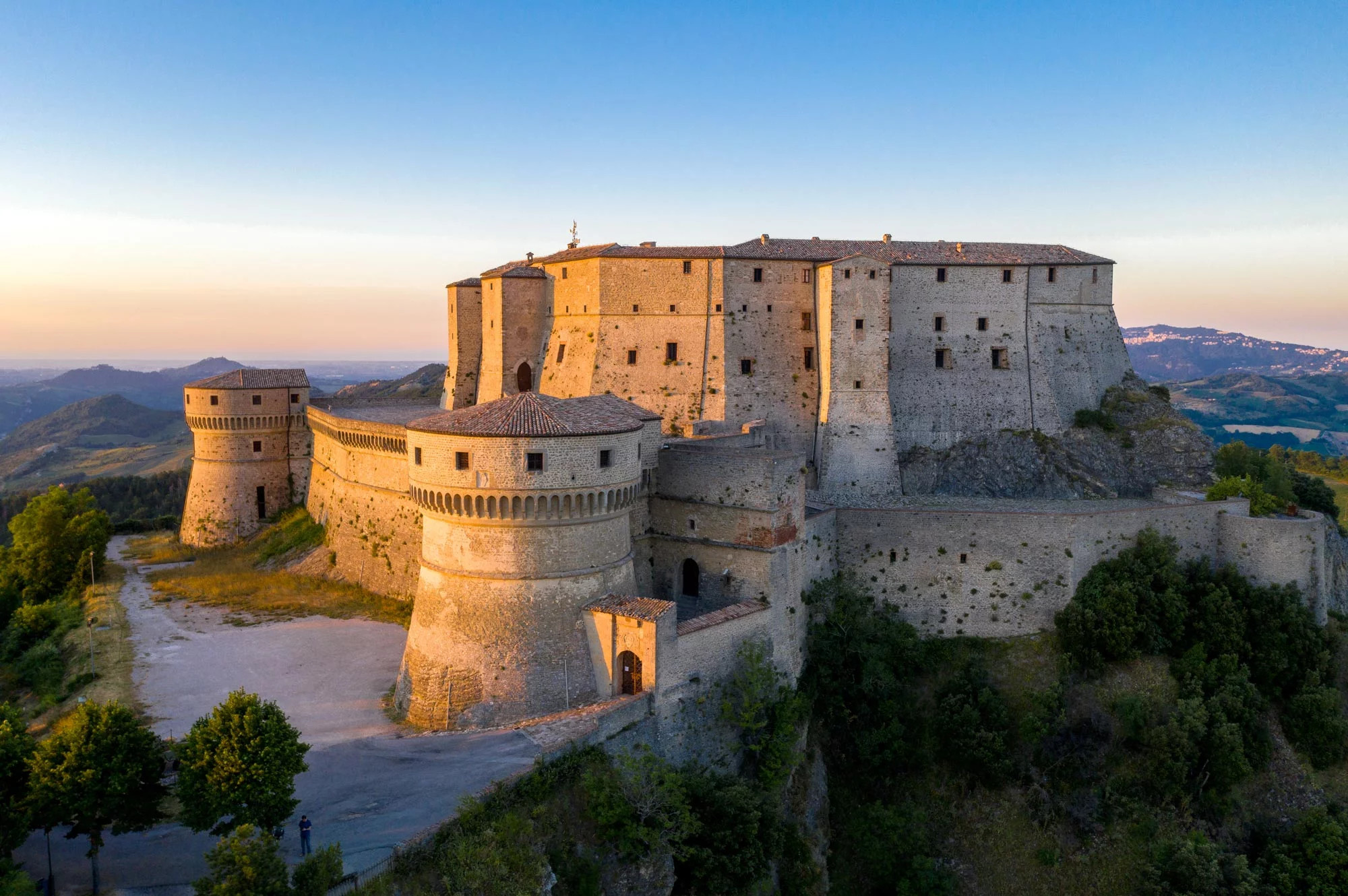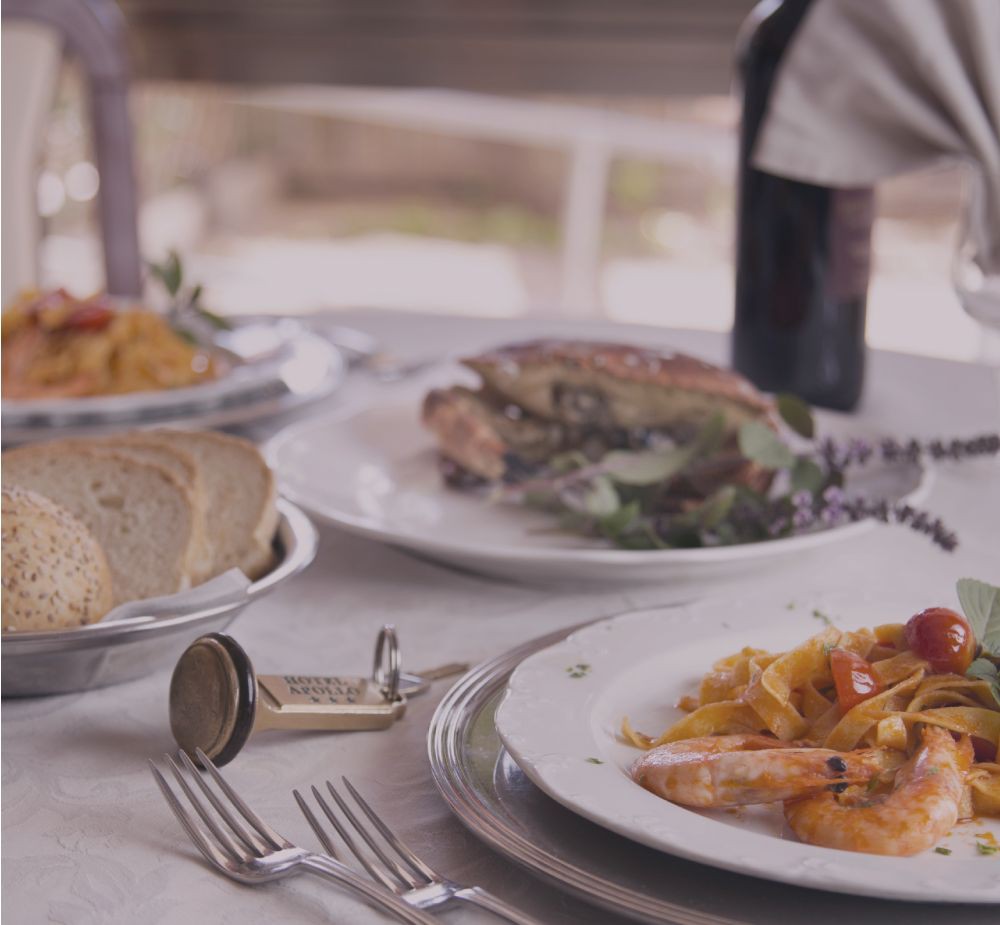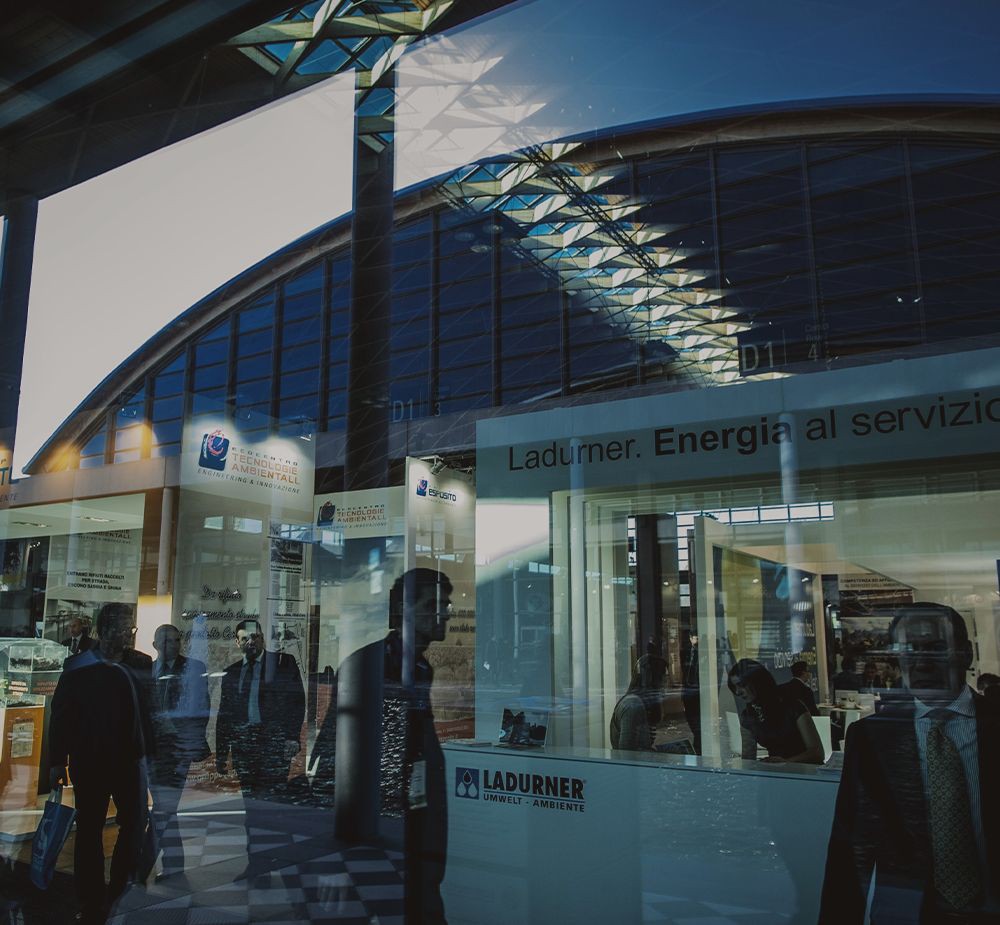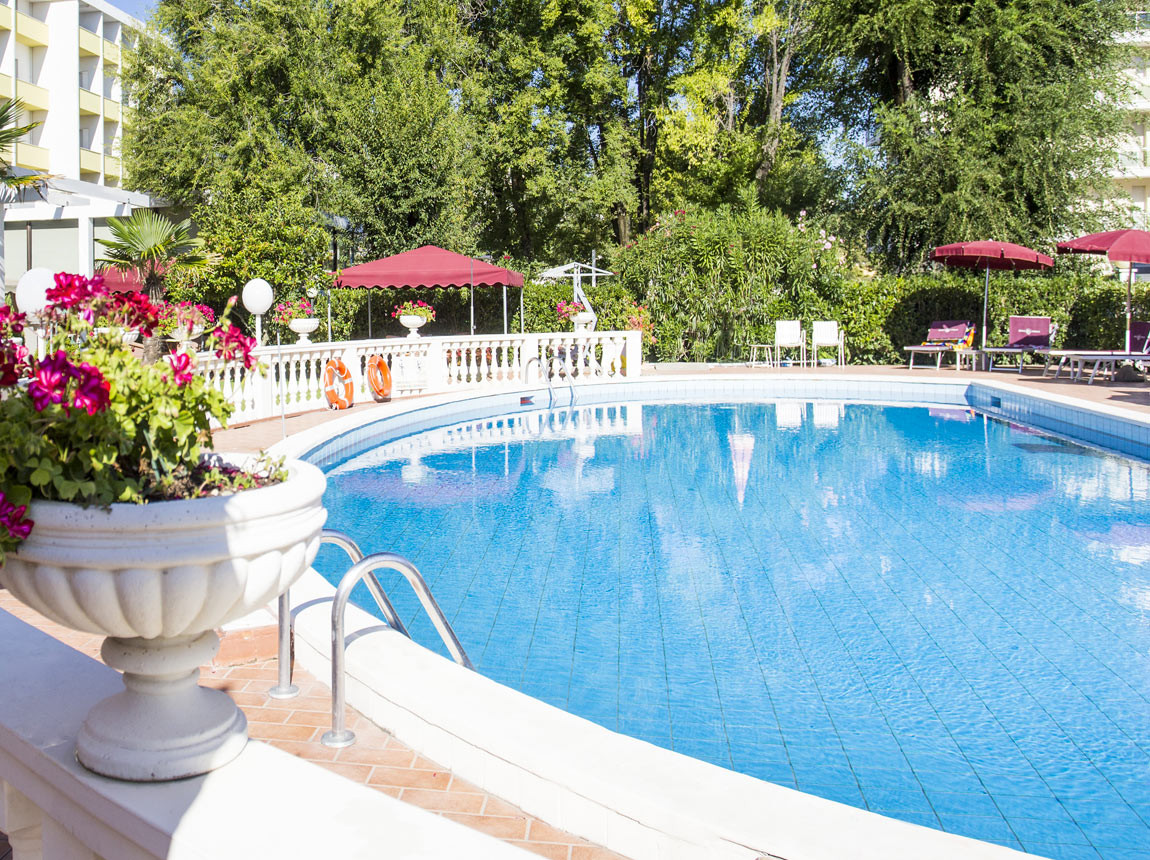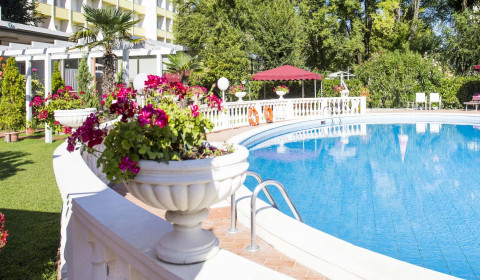Explore inland Romagna with the excursions organised for you by Hotel Apollo
Visit the historic towns of the Marecchia valley, sample typical local products and enjoy an area rich in history and traditions.
Rimini
When we think of Romagna, Rimini is the first place that springs to mind. The secret of its reputation lies in its variety; indeed, Rimini has always been the epitome of diverse tourism. It has wonderful medieval and Roman monuments to visit, such as the Arch of Augustus, the Tiberian Bridge, the Malatesta Temple, the Fortress of Sigismund, besides numerous castles and ancient churches scattered throughout the Rimini area. But the real gem of Rimini’s archaeological heritage is the Domus del Chirurgo (the Surgeon’s House), a mini Pompei containing an extraordinary collection of surgical and pharmaceutical instruments, the most extensive found to date.
San Marino
San Marino, the world’s oldest and smallest Sovereign State, which conserves history, ancient monuments and an enviable culture. Not to be missed are the numerous castles in the Monte Titano area, with their fascinating museums. The historic centre of San Marino is the most popular destination for visitors. Explore the narrow old streets, packed with shops where you can find anything, at excellent prices.
Gradara
Gradara is one of the most evocative villages from the historical point of view. The town is best known for the tragic love story of Paolo and Francesca, which was immortalised by Dante in his Divine Comedy. A visit to the magnificent Castle is a must; from here the views of the Adriatic coast are breathtaking.
San Leo
If you are looking for unspoilt places you must see San Leo, a small village that sits on an enormous rocky outcrop in the Marecchia Valley. The only way of accessing this unusual and charming village is a single-track road carved out of the rock. The views from San Leo are stunning. It is also remembered for a mysterious and singular character: the “alchemist” Count Cagliostro, who was imprisoned in the fortress and died there in 1795. To visit: the Fortress, the Romanesque church and the Cathedral.
Santarcangelo di Romagna
Always considered a gateway to Romagna’s past, the town is divided into two parts: one sixteenth century and the other medieval. Here art lovers will find plenty to see. In particular, we recommend: the Malatesta Fortress, the Ethnographic Museum of the Customs and Traditions of the Romagna People, the Collegiate Church, Piazza Ganganelli and the Clock Tower. Finally, Santarcangelo conserves one of the most wonderful and fascinating mysteries of our region: over 100 tufa caves. Just visiting them will leave you awestruck at the beauty of this place.
Montebello
Montebello’s ancient history is inextricably linked to its castle and the legend of Azzurrina. Fans of paranormal phenomena should not miss the chance of visiting the Castle and discovering the story of Azzurrina, the albino girl who disappeared inside the walls, never to be seen again. Legend tells that her ghost remained imprisoned inside the Castle and that she comes back every five years on the summer solstice, with noises and paranormal activity.
Montefiore
A magnificent village surrounded by green, with a splendid and well-preserved Fortress. Arriving in Montefiore is like stepping back in time. Places to visit: Porta Curina, the fourteenth century well in its courtyard, 14th century frescoes, the exhibition of contemporary art and the paleontology collection. For a very different afternoon spent exploring our historical legacy.
Saludecio
Located in the leafy hills of Valconca, Saludecio’s charm lies in its historic town centre, its fantastic walls and its streets lined with ancient palaces. What to see: The parish church of San Biagio, containing many works of art, the Town Hall and the Cerretto Castle; one of the best preserved in the entire Rimini area.
Montegridolfo
Thanks to its recent restoration, Montegridolfo is now the best-preserved medieval village in our region. The village itself is a place of inestimable artistic and historic interest that is certainly worth a visit. What to see: the Church of San Rocco, with its fascinating paintings, the Museum of the Linea dei Goti, containing numerous historic relics.
Montescudo
Montescudo is the living testimony of a long-lost culture. What to see: the fascinating and wonderful “Museo della Linea Gotica Orientale”; several religious buildings such as the Parish Church of Montescudo, the Civic Tower, the ancient theatre and the ruins of the Malatesta Fortress alongside the city walls. Nature lovers can treat themselves to a long walk in the Albereto forest, 25 hectares of unspoilt green, with wonderful plant life and breathtaking views.
Verucchio
Located in a strategic position between sea and hills, Verucchio offers plenty of historic sites of interest, including: various religious buildings and two major Fortresses, the Rocca del Sasso and the Rocca del Passarello, which form the most ancient part of the town.

